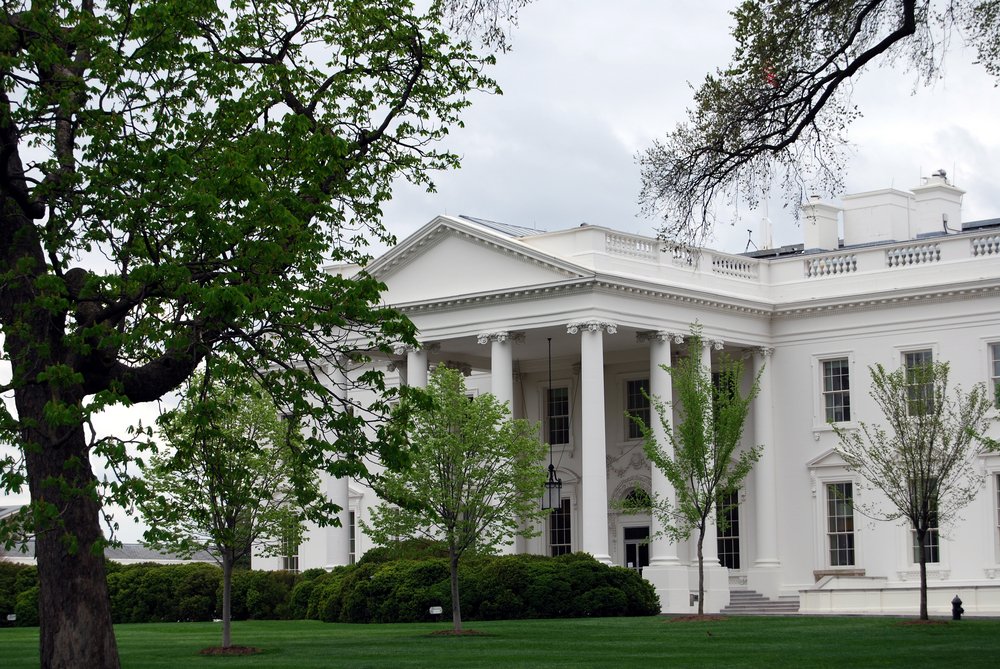Is Western Separation Realistic? A Saskatchewan Perspective

Table of Contents
Economic Viability of a Separatist Saskatchewan
The economic viability of a separatist Saskatchewan is a critical factor in assessing the realism of such a move. Saskatchewan's economy is currently intertwined with the Canadian federal government and heavily reliant on interprovincial trade. To become economically independent, the province would face significant challenges.
-
Current Economic Dependence: Saskatchewan currently benefits significantly from federal transfer payments and programs. Severing ties would necessitate finding alternative revenue streams to maintain existing levels of public services like healthcare and education. Interprovincial trade, particularly with Alberta and Manitoba, also plays a crucial role in the Saskatchewan economy. Disrupting these established trade routes could have serious economic consequences.
-
Resource Base and Potential for Independence: Saskatchewan possesses a rich resource base, including potash, agriculture, and oil & gas. However, relying solely on these resources for economic independence presents its own set of risks. Fluctuations in global commodity prices could severely impact the provincial economy. Developing a diversified economy beyond these core sectors would be vital for long-term fiscal sustainability.
-
Trade Agreements and International Investment: A separated Saskatchewan would need to negotiate new trade agreements with Canada and other countries, a process that can be lengthy, complex, and uncertain. Securing international investment to support economic growth would also be a significant challenge. Navigating the intricacies of global trade without the established framework of the Canadian federal government would require significant diplomatic and economic expertise.
-
Central Bank and Currency: Establishing a new central bank and currency would involve substantial costs and risks. Managing monetary policy and maintaining the stability of a new currency would require considerable expertise and infrastructure. The initial economic instability could severely impact the province's economy and citizens.
-
Impact on Agriculture: Saskatchewan's agricultural sector is a cornerstone of its economy. Separation could disrupt established trade routes and access to markets, negatively impacting farmers and agricultural businesses. Navigating international trade regulations and tariffs independently would be a major hurdle.
Political Feasibility of Saskatchewan Separation
The political feasibility of Saskatchewan separation is equally crucial. While some level of dissatisfaction with the federal government exists, a successful separatist movement requires significant public support and political will.
-
Public Opinion: While polls occasionally show some support for greater provincial autonomy, widespread support for full separation in Saskatchewan is currently lacking. A successful secession would necessitate a clear and decisive mandate through a legally binding referendum, which remains a considerable hurdle.
-
Legal and Constitutional Hurdles: Secession from Canada is a complex constitutional matter with significant legal obstacles. The Constitution Act of 1867 and subsequent amendments lay out the framework for Confederation, and any attempt at separation would likely involve lengthy and contentious legal battles.
-
Political Landscape: The current political landscape in Saskatchewan doesn't indicate a strong push for separation. While certain political parties may advocate for greater provincial control, outright support for secession is not a dominant force. Building a powerful separatist movement would require significant political organization and mobilization.
-
Federal Government Reaction: The federal government's response to a potential Saskatchewan separation attempt is uncertain but would likely be significant. Negotiations would be complex and could involve legal challenges, economic sanctions, and political pressure.
-
Interprovincial Relations: A successful separation could severely strain relations with other provinces, particularly those with close economic and social ties to Saskatchewan. This could have significant negative impacts on interprovincial cooperation and trade.
Social and Cultural Implications of a Separatist Saskatchewan
The social and cultural implications of a separatist Saskatchewan are far-reaching and deserve careful consideration.
-
Saskatchewan Identity: Saskatchewan possesses a unique identity within the broader Canadian context. Separation could redefine this identity, creating both opportunities and challenges. The development of new national symbols and cultural institutions would be a significant undertaking.
-
Social and Cultural Ramifications: Separation could impact immigration patterns, potentially creating barriers for newcomers and affecting the social fabric of the province. Maintaining social cohesion and managing potential social unrest would be critical.
-
Access to Federal Programs: Saskatchewan currently benefits from various federal programs and services, including healthcare and social welfare. Maintaining these services after separation would require significant restructuring and potential financial sacrifices.
-
Impact on National Symbols: The creation of new national symbols and institutions to replace existing Canadian ones would be a defining aspect of a separated Saskatchewan. This symbolic change could have deep cultural and emotional impacts on its citizens.
-
National Unity and Reconciliation: A Saskatchewan separation could have a ripple effect on national unity and reconciliation efforts across Canada, potentially exacerbating existing regional tensions and undermining national cohesion.
Comparing Saskatchewan's Situation to Other Potential Separatist Movements (Alberta, Wexit)
The potential for Saskatchewan separation is often discussed in the context of similar movements in other Western provinces, particularly Alberta and the Wexit movement. While both share grievances about perceived political and economic disadvantages within Confederation, their situations differ in several key aspects.
-
Similarities and Differences: Both Saskatchewan and Alberta have experienced periods of frustration with federal policies. However, Alberta’s economy is more diversified and its resource base (oil and gas) is arguably more significant, giving it a potentially stronger economic foundation for independence. The Wexit movement is more overtly focused on separation, while support for independence in Saskatchewan is less consolidated.
-
Potential Alliances or Conflicts: The relationship between Saskatchewan and Alberta in a separation scenario is uncertain. Potential alliances could form based on shared economic interests or political goals. However, conflicting priorities concerning resource management or trade could also create divisions.
-
Impact on Other Movements: The success or failure of a Saskatchewan separation attempt could significantly influence other Western separatist movements. A successful secession could embolden other groups, while a failure could dampen enthusiasm for similar efforts.
Conclusion
This article has explored the realism of Western separation from a Saskatchewan perspective, examining its economic feasibility, political viability, and social consequences. While there is occasional public sentiment in favour of greater autonomy, the significant challenges in achieving a fully independent Saskatchewan are substantial. The complexities of disentangling from the Canadian federation are immense, and the economic and social costs would require careful and comprehensive consideration. The legal hurdles are significant, and achieving the necessary political will remains a major obstacle.
Call to Action: The debate surrounding Western separation, and specifically the Saskatchewan perspective, remains a crucial issue for understanding the future of Canada. Further research and open discussion on the topic of Western separation, focusing on the nuanced realities for Saskatchewan, are vital for informed decision-making. Let's continue the conversation about the future of Saskatchewan within Canada.

Featured Posts
-
 Regreso A La Forma La Salud Y La Productividad De Javier Baez
May 22, 2025
Regreso A La Forma La Salud Y La Productividad De Javier Baez
May 22, 2025 -
 David Walliams Slams Simon Cowell Amid Britains Got Talent Dispute
May 22, 2025
David Walliams Slams Simon Cowell Amid Britains Got Talent Dispute
May 22, 2025 -
 Reddits Viral Missing Girl Story Fact Or Fiction A Sydney Sweeney Film
May 22, 2025
Reddits Viral Missing Girl Story Fact Or Fiction A Sydney Sweeney Film
May 22, 2025 -
 The Goldbergs Behind The Scenes Of A Popular Sitcom
May 22, 2025
The Goldbergs Behind The Scenes Of A Popular Sitcom
May 22, 2025 -
 Western Separation Movement A Focus On Saskatchewans Role
May 22, 2025
Western Separation Movement A Focus On Saskatchewans Role
May 22, 2025
Latest Posts
-
 Switzerlands Strong Rebuke Of Prcs Taiwan Drills
May 22, 2025
Switzerlands Strong Rebuke Of Prcs Taiwan Drills
May 22, 2025 -
 Navigating Trade Friction Switzerland And Chinas Call For Dialogue On Tariffs
May 22, 2025
Navigating Trade Friction Switzerland And Chinas Call For Dialogue On Tariffs
May 22, 2025 -
 Berns Sharp Response To Chinese Military Activities
May 22, 2025
Berns Sharp Response To Chinese Military Activities
May 22, 2025 -
 Switzerland And China A Plea For Dialogue On Trade Tariffs
May 22, 2025
Switzerland And China A Plea For Dialogue On Trade Tariffs
May 22, 2025 -
 Where To Buy High Quality Cassis Blackcurrant
May 22, 2025
Where To Buy High Quality Cassis Blackcurrant
May 22, 2025
